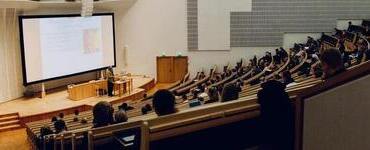We can learn about our second language (L2) learner identities by understanding their imagined communities which they create to imagine their participation and language use. This paper will uncover the diversity of imagined communities, benefits and limitations for L2 learning, as well as offer instructional practices for helping assist L2 identity exploration in the classroom.
Keywords: L2 identity, L2 motivation, ideal L2 self, imagined communities
Introduction
Discovering and supporting learners’ second language (L2) identity is of significant importance for language educators. An identity construct that is particularly of value to understand and explore for language educators is referred to as the idealized L2 self or the idealized L2 speaking self (Dörnyei, 2005). Research on L2 identity considers language development as a social practice, informed by a variety of interactions with the social world (Bucholtz & Hall, 2008; Norton, 2010). When considering implementing identity-aware pedagogical practices, it is important to note that English Language Learners (ELLs) in English as a Foreign Language (EFL) contexts continue to achieve good grades in English classes, but often lack communicative competence: the grammar translation approach has been the reason for this conundrum in recent years (Yim, 2016). Why is this? Are we too focused on assessment outcomes, high-stakes testing, explicit grammar instruction, and less on learners’ motivation and identities?
The goal of this paper is to suggest answers to these questions, exploring the connection between identity and L2 learning in EFL contexts and elaborating on a specific component that correlates with an ideal L2 identity: Imagined Communities. Imagined communities are communities that language learners might idealize and in which they strive for inclusion. The term was initially coined by Benedict Anderson (2016) as “imagined because members of even the smallest nation will never know most of their fellow-members, meet them, or even hear of them, yet in the minds of each lives the image of their communion” (p. 6). English learning opens up the possibilities for a variety of imagined communities, each with the possibility to be imagined differently depending on the context. These contexts can be in a country such as Hungary where a more omnipresent national identity is desired or at the individual level where advancement in a career may be the reason to seek out and connect with an L2 identity (Pavlenko & Norton, 2007). With there being various imagined communities in our learners, I aim to explain why teachers need to understand who the imagined communities of English learners in an EFL context might be and how this can tie into learner motivation and L2 identity. I attempt to answer why it is important that English language teachers in EFL contexts recognize and also promote imagined communities in their learners while also looking at the benefits and potential negative effects this provides for the learner and the learning environment. The paper concludes with some practical activities to help teachers discover their learners’ imagined communities, as well as resources/ideas to help foster these ideas.
Imagined communities and second language acquisition
When it comes to language learning, imagined communities have a precise definition and scope. They help teachers uncover how communities of our imagination tie into language learner identities and their correlation with learner motivational systems. Two seminal researchers in the area of identity and second language acquisition, Yasuko Kanno and Bonny Norton (2003), explain that while imagined communities are, in fact, groups of people with whom we communicate, there needs to be something more tangible for the imagined communities to truly make an impact on our lives: engagement. They further define imagined communities as “groups of people, not immediately tangible and accessible with whom we connect through the power of imagination” (Kanno & Norton, 2003, p. 241). Norton (2010) adds that imagined communities are “a community of the imagination—a desired community that offers possibilities for an enhanced range of identity options for the future” (p. 355).
My imagined community
My experience with the imagined community began when I started learning Japanese 10 years ago. I have to credit a lot of my motivation to an imagined community, and specifically the aforementioned identity options and possibilities for the future, such as acceptance into various communities of interest (running, music, language learning) in Japan. At the time I was living in Edmonton, Alberta, Canada, a city with a small, but accessible and tangible Japanese community. I became friends with a married couple from Japan. Through this friendship I started to gain interest in Japanese culture, which acted as a gateway to the language. Fast forward a couple of months and I found myself in Tokyo struggling to inquire where the washrooms were. However, it was this experience that planted the idea of an entire community of Japanese speakers that I wanted nothing more than to connect with through a language I could barely begin to process. Upon returning to Edmonton, I found myself daydreaming about comfortably ordering coffee in Japanese, singing Japanese karaoke songs without missing a syllable, and asking for and receiving directions to the washroom in Japanese. More importantly, I desired to connect with a community of people that could only be possible, at the time, if I buckled down, learned Japanese, and continued to seek my ideal L2 self. The thoughts of a deeper connection with this community helped me to slowly uncover my ideal Japanese L2 self and inspired me to eventually learn the three writing systems (46 respective hiragana and katakana, as well as basic kanji, which are Chinese characters). I was also able to get my tongue muscles working by fumbling through self-introductions, and to express my love of baseball, high-speed trains, and the well-known author Haruki Murakami.
The ideal L2 self and imagined communities further explained
There is ample literature suggesting the importance of considering identity and the imagined communities of L2 learners. Firstly, it is important for English language educators to recognize that our learners’ ideal L2 self is a kick-starter for promoting imagined communities in the classroom and then understand how this can tie into learners’ motivation. Dörnyei (2005) reiterates a connection between discovering the ideal L2 self and the vast imagined communities in our learners, saying that “our idealized L2-speaking self can be seen as a member of an imagined L2 community whose mental construction is partly based on our real-life experiences of members of the community/communities speaking the particular L2 in question and partly on our imagination” (p. 102).
Ryan (2009) discovered through a study in an EFL setting in Japan that there is a correlation between the ideal L2 self and finding personal satisfaction when using a language with others. Ryan (2009) framed this as integrativeness, suggesting that discovering the ideal L2 self can act as a motivational tool, allowing learners to notice the difference between using the language outside the classroom (i.e. in the community, engaging with other English speakers) and English as an academic subject (only being used in the classroom).
Similarly, Peng (2015) explained that learners envisioning themselves in an English speaking community correlates with the imagined communities construct, which is in line with Dörnyei’s (2005) definition of the ideal L2 self. This may, in turn, enhance one’s motivation to use English. Learners’ images of themselves as communicative members of an imagined community may motivate them to become closer to attaining this ideal L2 self (Ryan, 2009, as cited in Peng, 2015).
Peng’s 2015 study, which examined university learners in an EFL setting in China, found that correlation between positive past L2 learning experiences and an intent to become a part of an imagined community could lead to envisioning proficiency in English. Additionally, Peng (2015) argued that students who imagined themselves as part of the global community and constructed the image of a proficient user in that community had the ability to look beyond tests in a heavily exam-oriented context. Peng (2015) warned that the importance of passing examinations might undercut learners’ desires to connect with their imagined community. The study suggests that effort on the part of teachers and parents could help learners see their true potential in the L2, especially in relation to engaging with English outside of the classroom, which I address below.
Yim (2016) examined 20 primary school students in South Korea in a three year longitudinal study, looking specifically at the correlation between learners’ learning experiences outside of school and their imagined communities. Like Peng (2015), Yim (2016) argued that language learners who imagine proficient use of the L2 have a stronger connection to their ideal L2 self—hence the imagined community. Of the 20 students Yim interviewed, 19 of them recognized English as something they would use in their respective imagined communities, whether that be a high school, college, or a future career where they may work with non-Koreans (Yim, 2016).
Limitations of imagined communities in language learning
There are limitations to applying the construct of imagined communities to L2 teaching. Kanno and Norton (2003) emphasize that while recognizing imagined communities is beneficial to understanding our learners’ respective identities and language goals, the concept does not always lead to positive change. Kanno and Norton (2003) discussed a case of a Japanese teenager who had spent most of his life in English speaking countries, yet identified as a Japanese person throughout. He maintained his Japanese language ability while constructing an imagined community within Japan that would await his return. Upon returning to Japan, his imagined community did not coincide with his expectations, causing him to reject his Japanese identity. This disassociation is a potential drawback of an imagined community, especially if a learner’s perceived identity does not harmonize with the imagined community. However, in the case of this Japanese teenager, Kanno and Norton (2003) argued that his imagination not only gave him a sense of direction while abroad, it allowed him to maintain his ability to interact in Japanese. I address ideas to mitigate this in the classroom below.
Yim (2016) found that even though learners as young as primary schoolers have considered imagined communities, this is not a prerequisite for communicative use of English. According to Yim (2016), “students seem to construct imagined communities mainly based on their learning experiences outside school, in which English is considered to be a crucial school subject and an important exam subject” (p. 62). Furthermore, Yim suggested that this particular imagined community did not necessarily coincide with that of the national curriculum in South Korea, which favored a more communicative approach, and this gap caused lower student engagement at state schools in the country. The students who preferred grammar found it more difficult to connect their learning to an imagined community where communication was, at its core, drawing more on envisioning themselves passing a high-stakes test (Yim, 2016). Yim (2016) suggested that in order to combat this, teachers should take a closer look at learners’ beliefs about English language learning. By developing and understanding related imagined communities, teachers can help guide their learners to see English as a communicative resource rather than just a subject to help prepare for an exam.
Activities supporting use of imagined communities in the EFL classroom
Table 1. Quick View Chart For Identity-Focused Activities
| Activity | Purpose |
| Quick Write | Find out what learners think about English language learning, specifically about why they are learning English. |
| Interests / Values / Abilities | Graphic organizer to find out learners’ interests, values, and abilities. |
| Multimedia Exploration | Provide examples of people, places, and things learners can encounter in their imagined community. YouTube is wonderful for this exploration. |
| K-W-L Chart | Graphic organizer to activate learner’s background knowledge and curiosity on a topic. Also, allows learners to reflect on what they learned. |
There are a number of ways to support our learners’ unique imagined communities in the EFL classroom. The activities described in Table 1 have been developed and adapted from what I have learned in coursework at Hamline University’s MA-TESOL program. I identified these practices for upper elementary learners in Japan who have often struggled to tell me why they are learning English. After reading the literature on imagined communities in language learners, the connection it has to the L2 self, and the risks we take in not connecting an imagined community to language learning, it became apparent that I needed to try a new approach. For example, to find out our learners’ beliefs surrounding English, we can ask them what it is they want to achieve in class, using a quick write activity (adapted from Celce-Murcia et al.’s 2014 textbook, Teaching English as Second or Foreign Language). A quick write allows the learners to write about a topic decided by the teacher without necessarily worrying about proper spelling or syntax. It is meant to be a reflective self-assessment tool and can even be made anonymous. A topic idea for this surrounding imagined communities could be topics such as “Why I am learning English” or “My ideal English speaking community.” The goal of the activity is to find out a little more about our learners, relating learning content to their prior knowledge and their current and future ideal L2 selves.
Additionally, and depending on the level of learner, they could tap into their ideal community by completing a chart of their individual interests, values, and abilities. The chart can be simply constructed with those three headings on a blank sheet of paper (INTERESTS / VALUES / ABILITIES). Once completed, the data can be analyzed (promoting high-order, critical thinking skills) and grouped into different imagined communities they potentially want to take part in. For example, if one learner had an interest in cooking, they could look for a cooking club or class to join, or utilize YouTube to find chefs they enjoy and recipes they want to create. This could offer a wonderful opportunity for connection with this community of interest.
Teachers might also provide learners with world news reports, television programs based on a community/topic of interest, and other multimedia outlets in order to guide their vision of their future selves. This may also situate the learners into an imagined global community, which could in turn spark their willingness to communicate (Peng, 2015). An example of this would be providing a learner who is interested in studying abroad with a promotional video on college life in the United States, for example (a suggestion here is to search YouTube for certain university promotional videos—most universities have these readily available). By providing this type of media in class, teachers are able to open up a discussion around not only studying abroad or higher education, but they can also have a dialogue around what it will take to achieve such a goal. The goal here is to highlight that English is used in the university community. A specific activity prior to watching the promotional video would be a K W-L (What I Know, What I Wonder, What I Learned) chart, where the learners fills out what they already know about the university or university life, what they wonder about the university or university life, and once the lesson is finished, they are able to fill in what they learned about the university or university life.
Additionally, to mitigate potential misalignment of learners’ individual imagined communities, such as the case of the Japanese teenager, I suggest the teacher act as a cultural informant in the classroom, developing awareness of these potential imagined communities by designing lessons based on “If / Then” scenarios to provide situational learning in regards to what may happen in the learners’ target community. An example would be, “If I move to Japan, then I need to be able to understand how to open a bank account.” The learner could create original sentences from this model, allowing for individualized future findings in the target culture. Also, the teacher, if applicable, could share experiences of life in a new community, creating a unit of study around this new life and the joys and challenges that come along with life while abroad.
Conclusion
As the research suggests (Bucholtz & Hall, 2008; Dörnyei, 2005; Norton, 2010; Peng, 2015; Yim, 2016), understanding learners’ imagined communities can help to gain a better understanding of their L2 identity and then draw on this knowledge to promote the communities of which the learner may not have been previously aware. Making connections between our learners’ ideal L2 self and their imagined communities, while attempting to facilitate a variety of communicative skills, is most definitely not a one-size-fits-all model. All learners will have different visions and reasons for learning English. By building upon our learners’ previous knowledge and their individual interests, and by beginning to understand them not only as ELLs, but as people with desires and dreams (i.e., their ideal L2 self), we can start to tap into learner motivation, which will assist them in stepping foot into their imagined community and further guide them to their language learning goals. Like my own language journey, it has to start with an idea, an imagination, and a desire. It is 10 years later and this once imagined community has become my reality.
References
Anderson, B. R. (2016). Imagined communities: Reflections on the origin and spread of nationalism (4th ed.). Verso.
Bucholtz, M., & Hall, K. (2008). Finding identity: Theory and data. Multilingua-journal of Cross-cultural and Interlanguage Communication, 27, 151-163. https://doi.org/10.1515/MULTI.2008.008
Celce-Murcia, M., Brinton, D., & Snow, M. A. (2014). Teaching English as a second or foreign language. National Geographic Learning.
Dörnyei, Z. (2005). The Psychology of the language learner: Individual differences in second language acquisition. Routledge.
Kanno, Y., & Norton, B. (2003). Imagined communities and educational possibilities: Introduction. Journal of Language, Identity & Education, 2(4), 241-249. https://doi.org/10.1207/S15327701JLIE0204_1
Norton, B. (2010) Language and identity. In: N. H. Hornberger, & S. L. McKay (Eds.), Sociolinguistics and language education (pp. 349-369). Multilingual Matters.
Pavlenko A., & Norton, B. (2007) Imagined communities, identity, and English language learning. In J. Cummins, & C. Davison (Eds). International handbook of English language teaching (pp. 669-680). Springer. https://doi.org/10.1007/978-0-387-46301-8_43
Peng, J. (2015). L2 motivational self system, attitudes, and affect as predictors of L2 WTC: An imagined community perspective. The Asia-Pacific Education Researcher, 24(2), 433-443. https://doi.org/10.1007/s40299-014-0195-0
Ryan, S. (2009). Self and identity in L2 motivation in Japan: The ideal L2 self and Japanese learners of English. In Z. Dörnyei, & E. Ushioda (Eds.), Motivation, language identity and the L2 Self (pp. 120-143). Multilingual Matters.
Yim, S. Y. (2016). EFL young learners: Their imagined communities and language learning. ELT Journal, 70(1), 57-66. https://doi.org/10.1093/elt/ccv037











